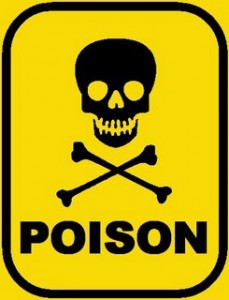25
Nov
U.S. Virgin Islands to Revamp Pesticide Policies in Wake of Toxic Poisonings
(Beyond Pesticides November 25, 2015) The U.S. Virgin Islands is revamping its pesticide enforcement and training and promoting alternatives in the aftermath of a tragic incident that took place in April of 2015 when a Delaware family, including two teenage sons, were hospitalized after being exposed to an illegal application of methyl bromide, a highly neurotoxic pesticide. Last week in St. Thomas, U.S. Virgin Islands, the Department of Planning and Natural Resources (DPNR) and the Environmental Protection Agency (EPA) held a joint conference on “Reducing Pesticides in the U.S. Virgin Islands.” As a result of discussions that took place between the more than 100 participants, DPNR has announced plans to promote natural alternatives to toxic pesticides and to draft new applications for commercial and purchase permits related to pesticide application in an effort to increase protections for residents and vacationers from the harmful effects of pesticide poisoning. According to EPA Region 2 Administrator Judith Enck, the full day conference was the first of its kind to take place in the Virgin Islands. 
Methyl bromide is a restricted use pesticide and is not registered for residential use, according to EPA’s 2013 Methyl Bromide Preliminary Workplan (p6). Although mostly banned in the U.S., the fumigant can still be used in certain agricultural and food storage sites under a controversial “critical use exemption” loophole in federal (and international) law. More than six months after the incident, updates on the family report that the two sons still struggle to eat, walk and sit up on their own and the father suffers from severe tremors, struggles to speak, and cannot turn the pages of a book. A pesticide poisoning also took place in Florida this year, causing a ten-year old boy to suffer a traumatic brain injury after his home was treated for termites.
In order to address the deficiencies in their existing laws, DPNR has identified two goals that will be the focus of their efforts. The first is revising the Pesticide Act of 2006 to require regulation that further manages professional applicators throughout the territory. A draft of these revisions is reportedly in the works, and will soon be made available for public comment. Additionally, DPNR will draft new applications for commercial and purchase permits that will require pesticide dealers to keep records and maintain a database to enable DPNR to track the transportation and sale of pesticides into and out of the territory. Measures to make sure applicators receive proper training and are provided necessary resources are also being explored by DPNR.
Though the tightening of regulations may be an important step in preventing the use of dangerous pesticides in the Virgin Islands, it was not the only measure discussed at the conference. According to Ms. Enck, “The focus of the conference was on ”˜integrated pest management’,” which she believes “saves money, prevents health damage and eliminates the need for pesticides, which quite often don’t work in the first place.” It is her hope that educating people on safer and natural alternatives will lead to a reduction in the overall use of toxic chemicals, benefiting both human health and the environment over the long run.
While making an effort to incorporate Integrated Pest Management (IPM) in to DPNR’s policies may be a step in the right direction, it is important to note that IPM is a term that is used loosely with many different definitions. A well-defined IPM program should be based on prevention, monitoring, control, and allowed materials, which offers the opportunity to eliminate the use of toxic pesticides. IPM does this by utilizing a variety of methods and techniques, including cultural, biological and structural strategies to eliminate pest-conducive condition, as opposed to chemical-dependent programs. Helpful examples of good and bad IPM policies were highlighted this year when two localities, Evanston, IL and Charlottesville, VA announced IPM programs codifying drastically different approaches to pest management.
For the management of structures and buildings, Beyond Pesticides advocates the use of defined integrated pest management (IPM) as a vital tool that aids in the adoption of non-toxic methods to control pests and facilitates the transition toward a pesticide-free (and healthier) world. It offers the opportunity to eliminate or drastically reduce pesticide use and to minimize the toxicity of and exposure to any products that are used. Sanitation, structural repairs, mechanical and biological control, population monitoring are some IPM methods that can be undertaken to prevent pest problems.
All unattributed positions and opinions in this piece are those of Beyond Pesticides.
Source: Virgin Islands Daily News











IPM in my book stands for Integrated Pesticide Marketing. Forget IPM. Promote ecological pest control.
November 26th, 2015 at 10:10 pm